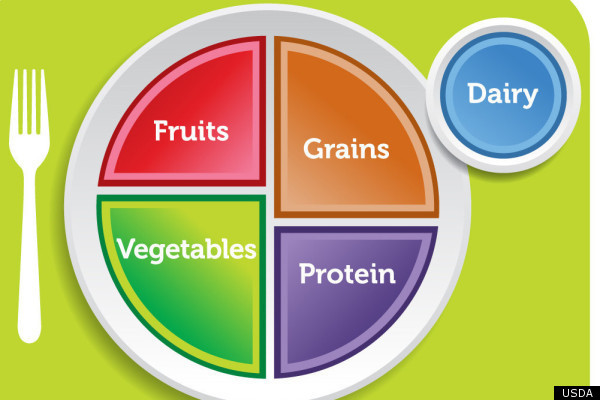
There are many reasons to stop drinking cow’s milk: You’re lactose intolerant, you’re protesting on behalf of animals, there’s too much fat in it… the list goes on.
It’s surprising to some, but we can actually get the nutrient fixes that milk gives us from alternative sources. It makes sense — we’re the only ones on the planet who drink another species’ milk, so it’s not like we naturally depend on it.
Soy milk — It’s the classic alternative and for good reason: It’s high in protein and B vitamins, low in fat, lactose-free and most are fortified with even more helpful minerals. Additionally, if you’re used to skim milk, the taste change is minimal. Take heed with more than a glass a day, though: It has components that stimulate estrogen production, which can encourage imbalances that create health issues.
Taste: Faintly sweet. Some varieties have a slight tofu flavor.
Pros: It has almost as much protein as cow's milk, plus plant chemicals that may help inhibit absorption of cholesterol. It's often fortified, so shake the carton well—added calcium tends to settle at the bottom, says Zied.
Cons: Some studies suggest that overconsuming soy promotes breast cancer. "A good guideline is about 25 grams of soy protein per day," says Zied.
Best in: Creamy soups and salad dressings, sauces, casseroles, and other savory dishes. Vanilla-flavored varieties are great in coffee or tea (or by the glass!).
Almond milk — This one’s been climbing the charts lately because both companies and consumers have discovered that almond milk is delicious. Some swear by it and say it tastes even better than soy. It has all the same benefits as soy (although it’s generally slightly less fortified with other minerals) and tends to stay fresh longer. The only caution to take with almond milk is with children: Some doctors say the early introduction of nuts into a child’s diet can predispose them to a nut allergy.
Taste: Creamy, rich, and slightly nutty with a hint of sweetness
Pros: The least caloric of the bunch, it's fortified with vitamin E, a powerful antioxidant that fights UV damage, as well as calcium and vitamins A and D.
Cons: While almonds themselves are a good source of fiber and protein, the milk contains skimpy amounts of these nutrients (that's because the milk is made by grinding the nuts and mixing with water). Almond milk is also higher in sodium than other alternatives.
Best in: Smoothies, coffee, and cereal
Hemp Milk — This is a newer alternative that’s yet to gain steam. It offers nutritious benefits similar to the above milks, although the protein content isn’t as high as it is in soy or almond. It’s creamier than most alternative milks, so it’s more than suitable for most cooking. For vegetarians or vegans wanting to vary the types of protein they consume, this is also a great choice.
.jpg) Taste
Taste: Nutty and earthy
Pros: It's naturally rich in omega-3 fatty acids—wonder nutrients for your heart, brain, and mood. Hemp milk is made with cannabis seeds, but it won't get you high, because it lacks significant THC (the psychoactive ingredient in marijuana).
Cons: Depending on the brand, you may gulp only 10 percent of your daily calcium needs. It's not a great source of protein either.
Best in: Mashed potatoes, muffins, and quick breads. Unobtrusive in flavor, it's a good stand-in for cow's milk in baked foods.
Rice Milk — Rice milk has all the usual benefits, except it exchanges high protein content for a high carbohydrate count. The taste can be suspect and it’s hard to cook with, but you certainly won’t find many people allergic to this product.
Taste: Light, watery, and sweet
Pros: The carbs. "Have a glass before or after a workout—it offers carbs to fuel and fluid to hydrate, and like a sports drink, it's a good source of electrolytes," says Nancy Clark, R.D., author of Nancy Clark's Sports Nutrition Guidebook.
Cons: The carbs. If you're trying to drop a few pounds, it's best to eat whole-grain carbs, which contain filling fiber; rice milk has zero.
Best in: Desserts, baked goods, pancakes, and French toast. Its natural sweetness complements indulgent foods.
Coconut milk - While coconut milk is high in saturated fat, it is much healthier than other saturated fat products, and the fat is easily metabolized by the body. Coconut milk also offers some particular health benefits. It is anti-carcinogenic, anti-microbial, anti-bacterial, and anti-viral. The main saturated fat that it contains, lauric acid, is also found in mother's milk and has been shown to promote brain development and bone health.
Taste: Thick, creamy, and, well, coconut-y
Pros: It has the least amount of sodium and can be fairly low-cal—even some flavored kinds will cost you only 90 calories per serving. Plus, most brands are fortified with half a day's worth of vitamin B12, a brain-boosting nutrient.
Cons: "The majority of fat is saturated," says Lauren Slayton, R.D., founder of Foodtrainers in New York City. But at five grams per serving, it constitutes less than 8 percent of your total daily value for fat.
Best in: Coffee, tea, pudding, smoothies, and oatmeal—it's a go-to thickener.

All milk alternatives have added vitamins and minerals in order to make them similar to cow's milk. To determine which one is the best is a bit tricky, but it would greatly depend on what your nutrition goals are.
It may come down to taste, so determine which of these milk alternatives you enjoy drinking the most while still fitting in with your dietary guidelines. My only recommendation would be to avoid the products with added sugar as the calories greatly increase in those.
Which of the above milk alternatives do you prefer?



.jpg)



.jpg)




